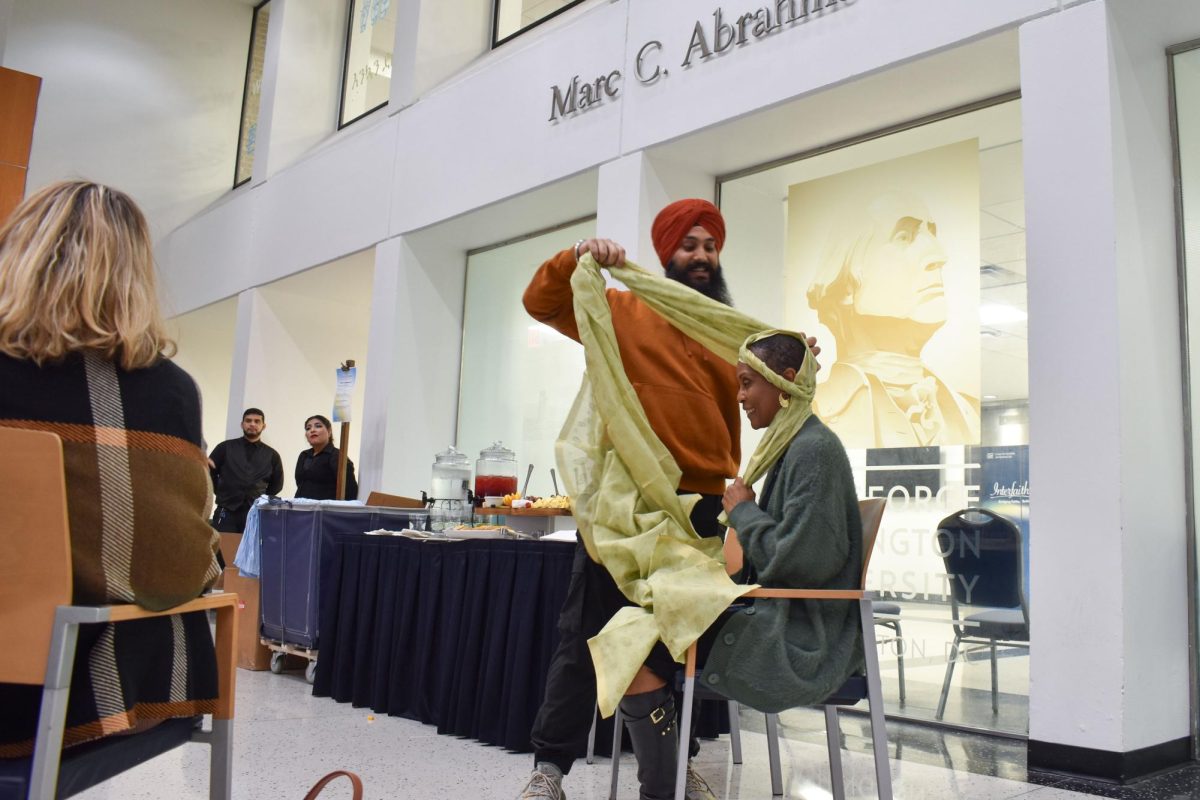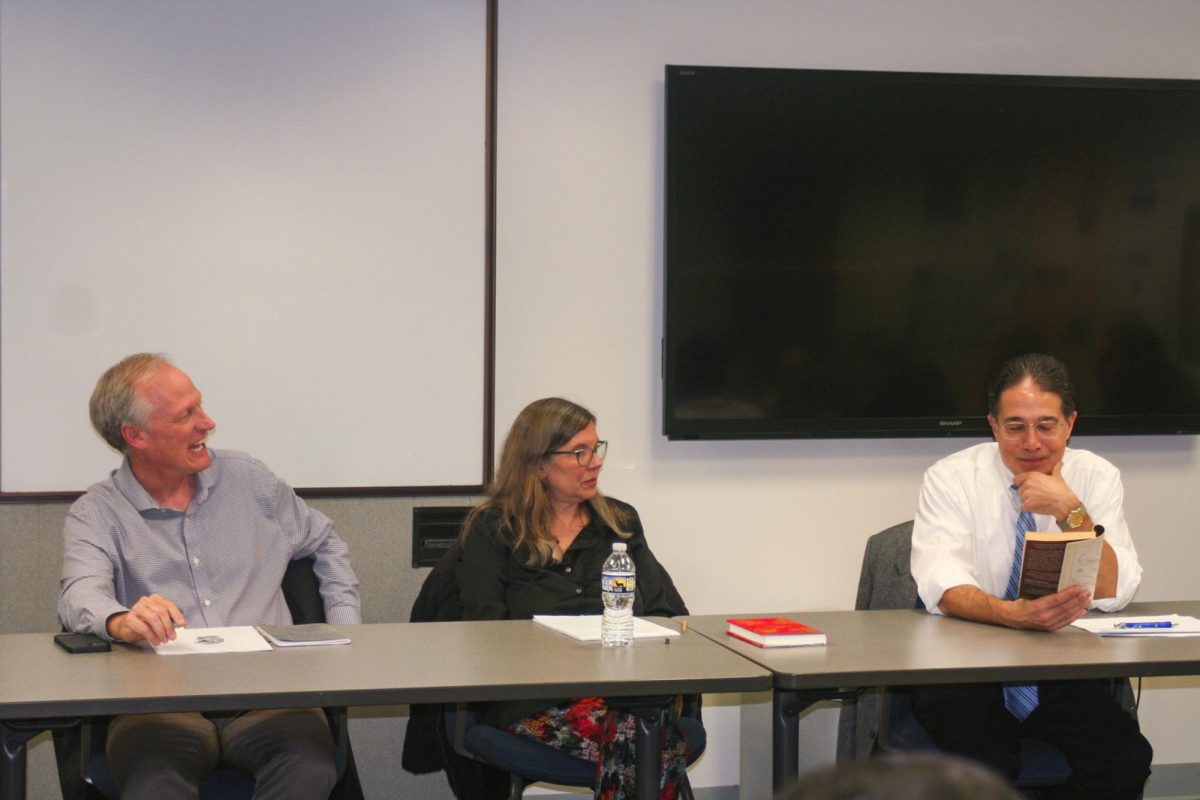Five years after merging with GW – and with a new leader at its helm – the Corcoran School of the Arts and Design is trying to cultivate a common identity, faculty said.
Before the Columbian College of Arts and Sciences absorbed the school in 2014, Corcoran faced financial uncertainty as an independent institution. Officials said the school – which is now headed by interim director Kym Rice, following former director Sanjit Sethi’s departure in July – is aiming to attract more students to its programs, but some faculty expressed doubts about the school’s ability to reverse its five-year trend of declining enrollment.
“I am really excited to have this one-year opportunity to be at the helm of the Corcoran and keep it going in a forward direction, because that’s really what I plan to do,” Rice said.
Rice said increased awareness about the Corcoran and its mission among students, faculty and staff at GW now relative to five years ago is one of the school’s biggest accomplishments since its merger with CCAS.
“More people externally, maybe internally to GW too, are aware of the Corcoran and understand what we’re trying to do – that we’re building a school that is related to the humanities focus of GW and CCAS but is also driven by arts programs,” she said.
Rice said one way she wants to foster a sense of community at the school is to implement student feedback in her decision-making process. This semester, Rice said she plans to form a student advisory council for the school, similar to the one that launched in the School of Media and Public Affairs last November.
“It is really important to be able to do something that gives students a little more authority and power,” Rice said.
But over the past five years, the Corcoran has continued to face hardships, including financial woes amid ongoing renovations at the Flagg Building on 17th Street. Last year, more than 15 students said they transferred or were considering transferring out of Corcoran because of issues like the high cost of attendance and feelings of isolation from the rest of GW.
Rice said she hopes to host and advertise exhibits and guest speakers to attract non-Corcoran students to visit the Flagg Building. She cited a 2017 event featuring animators and storyboard artists for the film “Coco,” which she said attracted an “incredible crowd of students from all over GW,” as a model of what Corcoran can offer to the rest of the University.
“We have incredible stuff going on,” Rice said. “We just need students to be more aware of it in general.”
She added that officials have continued to make progress on the search for a new permanent director, including penning a draft of a job description for the position this summer and obtaining permission from CCAS to begin the search. Rice, who is not pursuing the permanent position, said faculty will meet in the coming weeks to elect a search committee.
Faculty said consolidating the University’s arts programs “under one roof” and consistently showcasing students’ work are highlights from the past five years for the school. But they added that officials should expand Corcoran’s offerings to boost enrollment at the school.
Rebecca Landwehr, an adjunct professor of interior architecture, said offering alternative programs to traditional two- and four-year programs outside of regular business hours could boost interest in the school. She said Corcoran’s post-professional programs, like Digital Photography Basic and Figure Drawing, may entice people with full-time jobs to join the school.
But she added that the rising cost of attendance for students cannot continue to increase if officials want to improve Corcoran enrollment because prospective students may eschew the Corcoran and choose a more affordable art school.
“With GW being one of the most expensive undergraduate institutions in the country, there has to come a breaking point,” she said.
Kate Hardy, an adjunct professorial lecturer of ceramics, said she is not optimistic about a future jump in enrollment at the school because the Corcoran now requires students to complete G-PAC requirements, which detract from the focus on art that prospective art school students seek.
“If someone wanted to go to an art school, why would they go to GW?” she said. “They would go to an art school, and it’s not an art school anymore.”
Hardy added that the Corcoran is still “flailing and not a success,” and officials are not paying the school enough attention for it to be successful.
“It’s not a bustling creative space anymore,” she said. “It’s just kind of empty hallways. It’s just – it feels rundown and forgotten there.”
Bibiana Obler, an associate professor of art history, said creating a sense of community is difficult because the Corcoran student body is split between the Flagg Building and other buildings on the Foggy Bottom Campus like the Smith Hall of Art, which “means that you don’t always run into everybody at Starbucks.”
But she added that students, staff, GW faculty and Corcoran legacy faculty have gradually begun to build a cohesive community at Corcoran.
“Of course, the Corcoran has had to re-envision itself,” Obler said. “And so finally, it felt like that re-envisioning had made a lot of progress, and we’re coming together as a new community.”
Olivia Dupree contributed reporting.











